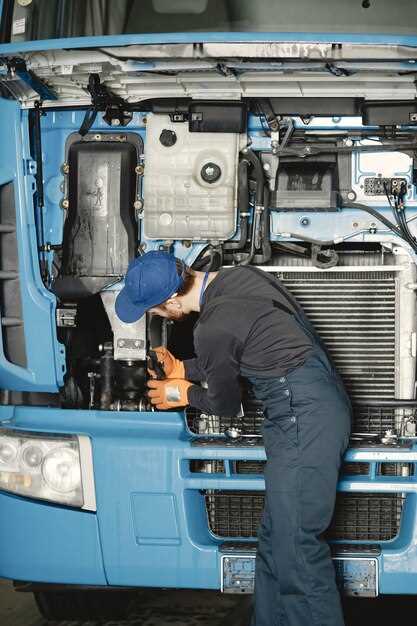
In the realm of commercial trucking, the suspension system plays a critical role in ensuring the vehicle’s stability, handling, and overall performance. Problems with the suspension can lead to a myriad of issues, affecting not only the safety of the driver and cargo but also the efficiency of operations. Thus, understanding how to diagnose suspension problems is essential for maintaining operational reliability.
When drivers notice unusual noises, uneven tire wear, or a lack of comfort while driving, these may be telltale signs of suspension issues. Proper diagnosis allows for timely repair, preventing further damage and costly repairs down the line. Identifying the root cause of suspension problems involves a systematic approach, assessing components such as shocks, struts, and bushings.
In the following sections, we will explore common symptoms of suspension failures, methods for diagnosing these problems, and recommendations for effective repair. Whether it’s addressing simple beatings from potholes or more severe breakdowns in the system, timely interventions can significantly enhance the longevity and performance of commercial trucks.
Common Symptoms of Suspension Issues in Heavy-Duty Vehicles
Heavy-duty vehicles are crucial for transportation and logistics, and their suspension systems play a vital role in ensuring stability and comfort while driving. Recognizing common symptoms of suspension problems can help in timely repair and maintenance, preventing larger issues down the road.
1. Uneven Tire Wear: One of the most noticeable indicators of suspension troubles is uneven tire wear. If tires show excessive wear on one side or develop bald spots, it may signify misalignment or worn suspension components.
2. Poor Handling: If a truck feels unstable during turns or exhibits difficulty maintaining a straight path, this could be a sign of suspension failure. Such handling issues often result from worn shock absorbers or struts.
3. Excessive Bouncing: A vehicle should not bounce excessively after hitting a bump. If it continues to bounce, this may indicate that the shock absorbers are no longer effective, necessitating repair.
4. Strange Noises: Clunking, banging, or rattling noises coming from the suspension system when driving over bumps are indicative of loose or damaged components. This requires immediate attention to avoid further damage.
5. Vehicle Tilting: If a truck leans to one side while parked or driving, this is a sign of potential issues with the suspension springs or other critical components. Such tilting can lead to dangerous driving conditions.
6. Increased Stopping Distance: An impaired suspension can lead to longer stopping distances, as the vehicle may not respond effectively to braking. This not only affects safety but can also contribute to greater wear on brake components.
Identifying these symptoms early can help fleet managers and drivers address suspension issues before they escalate. Regular inspections and maintenance of the suspension system are essential for the optimal performance of heavy-duty vehicles.
Step-by-Step Guide to Inspecting Truck Suspension Components

Inspecting the suspension system of a truck is crucial to ensure safety and performance on the road. Follow this step-by-step guide to conduct a thorough inspection of the truck’s suspension components.
1. Preparation
Before starting, park the truck on a flat, level surface. Engage the parking brake and use wheel chocks to prevent any movement. Equip yourself with the necessary tools, including a flashlight, tire iron, and a creeper for under-truck inspections.
2. Visual Inspection of Components
Begin with a visual inspection of the suspension system. Look for any signs of wear or damage on components such as shocks, struts, springs, and control arms. Check for any leaks in shock absorbers and signs of corrosion on the metal surfaces.
3. Check for Cracks and Deformation
Inspect all suspension components for cracks or deformation. Pay particular attention to areas where the parts are welded or connected, as these are common points of failure. If you observe any issues, these components may need replacing.
4. Inspect Bushings and Joints
Bushings and joints play a vital role in the suspension system’s performance. Check for any signs of deterioration or cracks in the rubber bushings. Also, ensure that all joints move freely without excessive play; this is essential for proper alignment and handling.
5. Examine the Springs
Inspect the springs for any signs of sagging or damage. Look for broken coils and ensure that the springs are properly seated in their mountings. If any springs appear distorted, they may need replacement.
6. Evaluate Alignment
Check the alignment of the truck’s wheels. If the truck pulls to one side or if tire wear is uneven, it may indicate suspension misalignment. An alignment check by a professional service may be necessary to resolve these issues.
7. Test Drive
After the inspection, take the truck for a test drive. Listen for any unusual noises while driving over bumps and turns, which can indicate suspension issues. Pay attention to how the truck handles and any vibrations felt through the steering wheel.
8. Document Findings
Finally, document your findings from the inspection. Keep a record of any issues discovered and the maintenance performed. This information is vital for future inspections and can assist in tracking the health of the truck’s suspension system over time.
By following these steps, you can effectively inspect the suspension components of a truck and ensure it operates safely and efficiently on the roads.
When to Seek Professional Help for Suspension Repair

Recognizing when to seek professional help for truck suspension repair is crucial for maintaining vehicle performance and safety. If you notice any unusual noises, such as clunking or rattling, it may indicate worn components that require immediate attention. Additionally, if your truck experiences a rough ride or excessive bouncing after hitting bumps, this can signal that the suspension system is failing and needs expert evaluation.
Another significant indicator is uneven tire wear, which can result from misalignment or suspension issues. If the truck pulls to one side while driving, it is essential to address the underlying causes, as this can lead to further damage. Vehicle stability during turns is also a critical aspect; if your truck feels unstable or tips excessively, it is time to consult a professional.
Moreover, if your truck has difficulty controlling body roll during maneuvers, this may be a sign of suspension trouble. Regular inspections and prompt action when noticing these symptoms can prevent more extensive repairs and ensure safety on the road. Seeking professional help ensures that your truck’s suspension system is assessed accurately, and any necessary repairs are performed correctly, maintaining optimal performance and safety.




